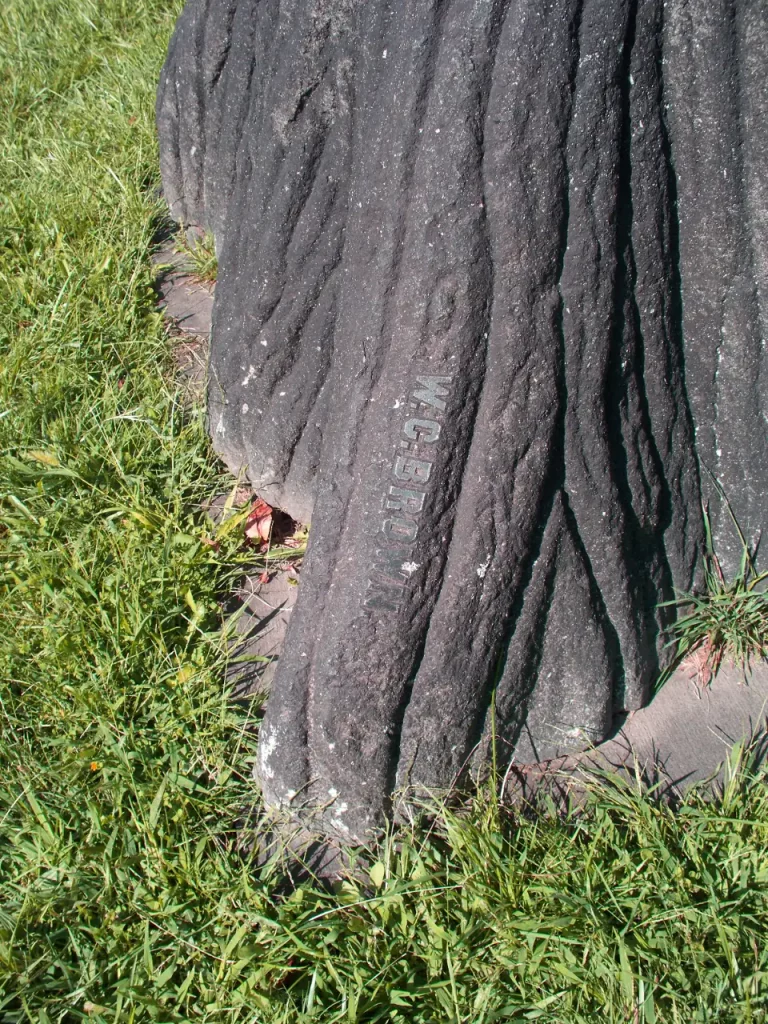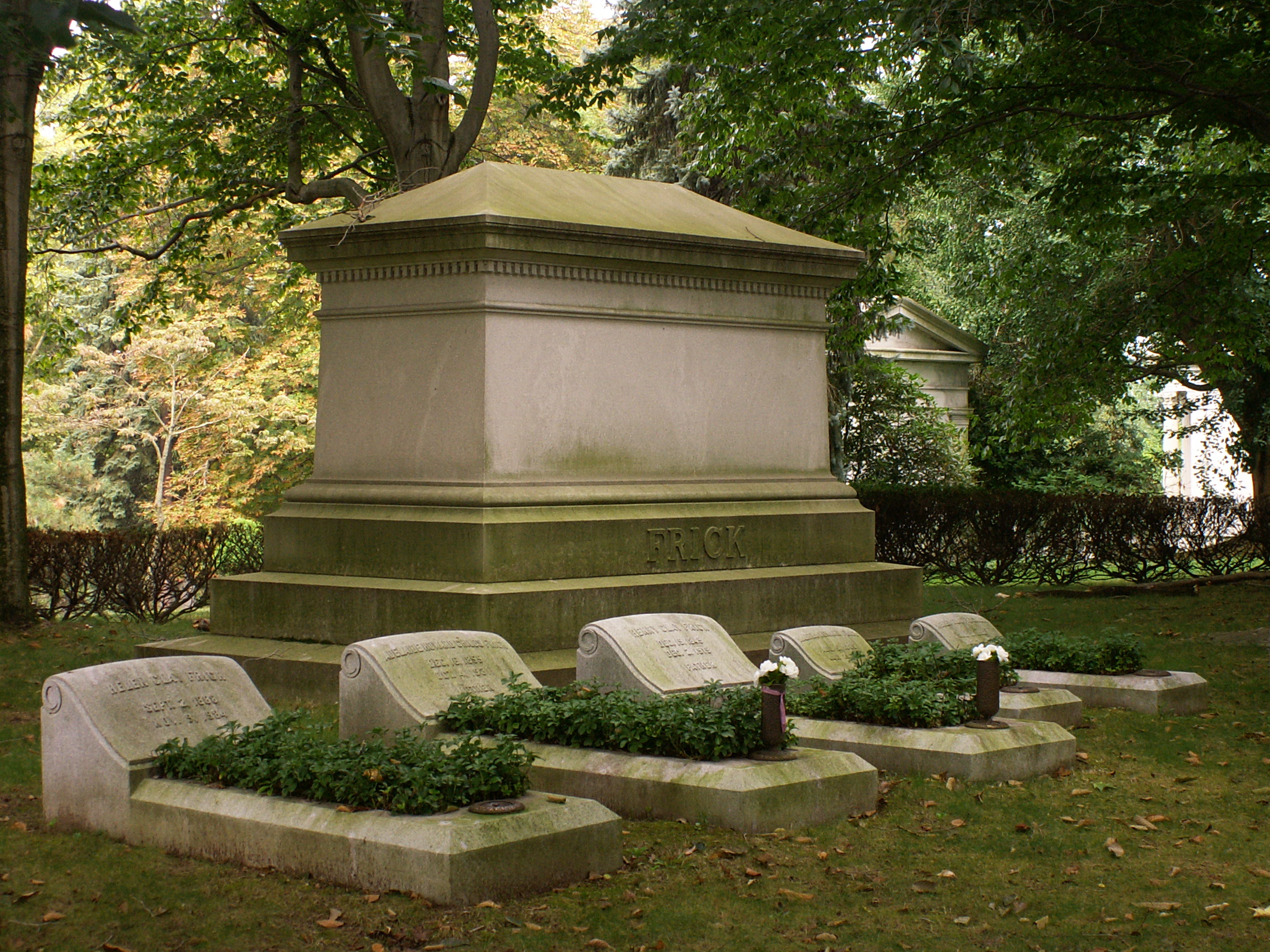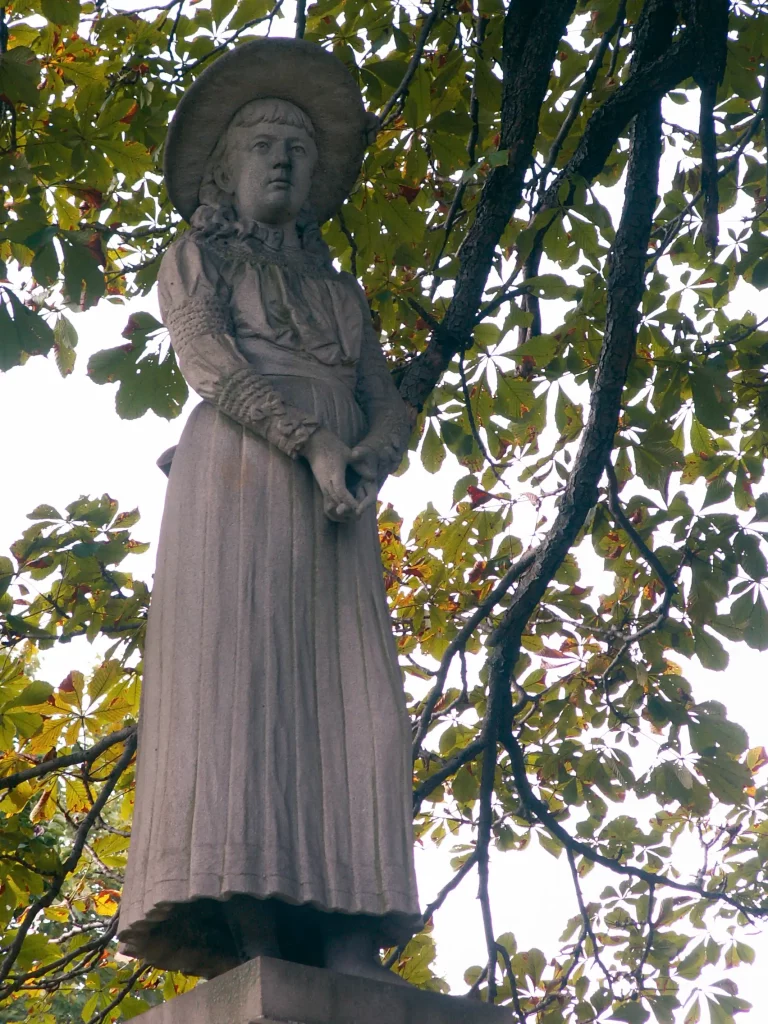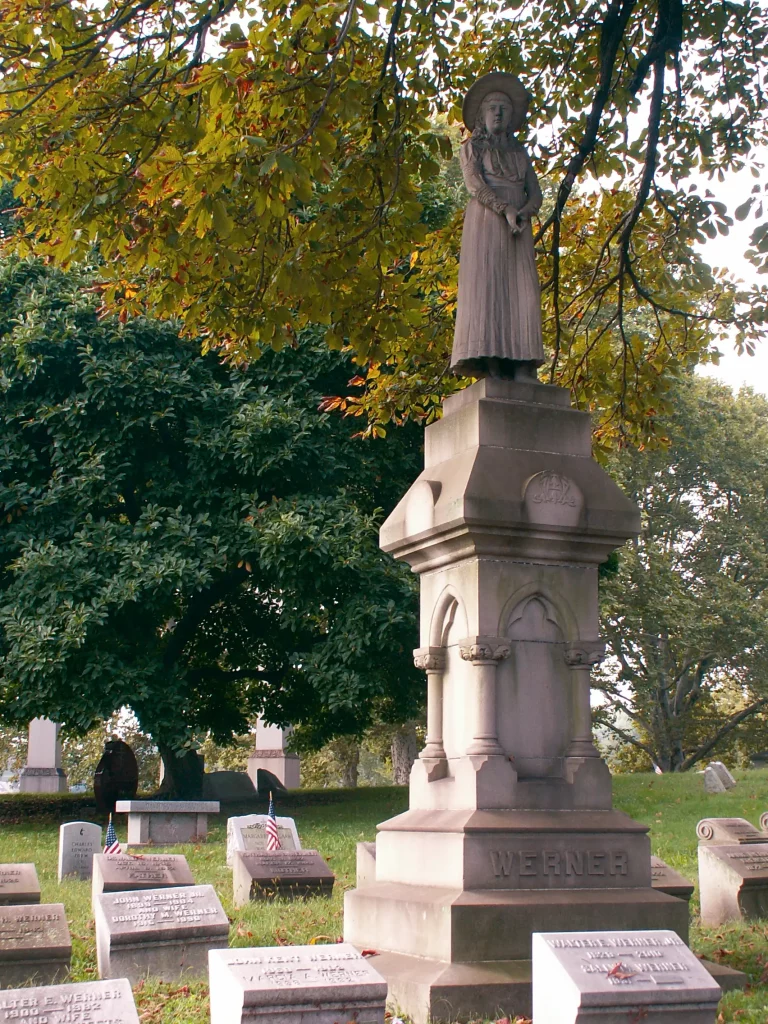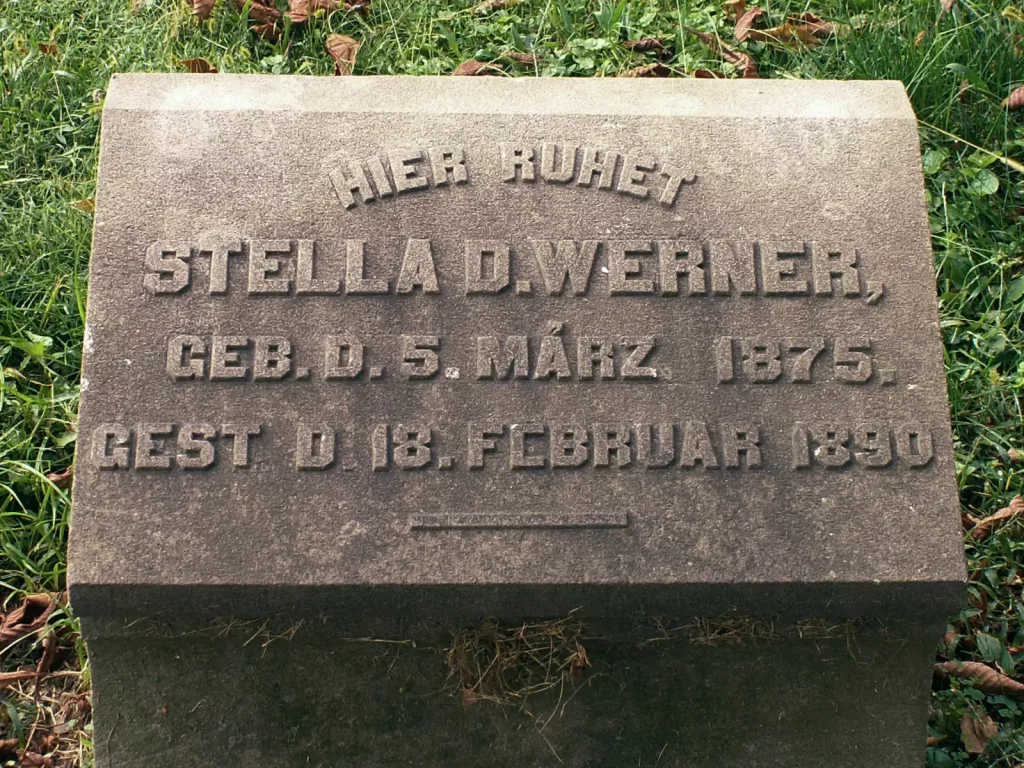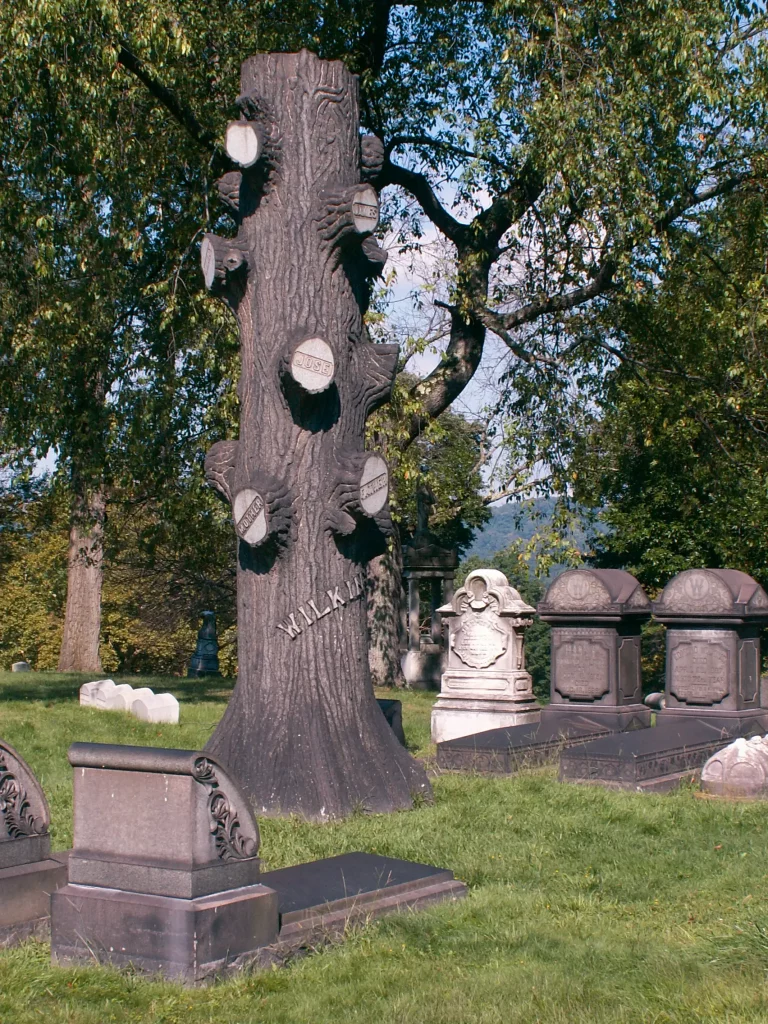
A huge rustic stump, probably the second-largest in Pittsburgh (without measuring, Father Pitt would say the Gilchrist stump in the Homewood Cemetery is probably taller). It is surrounded by graves of the Wilkins family, and each sawed-off branch is made to represent one dead Wilkins—a metaphor that old Pa Pitt thinks at least verges on tasteless, if it does not merrily dance on the grave of taste.

Whatever we think of its artistic merit, it does at least imitate the natural form of a stump with some success, and it is one of the few monuments in the cemetery that actually bear the name of the creator: W. C. Brown, signed in small plain letters on one of the roots.
